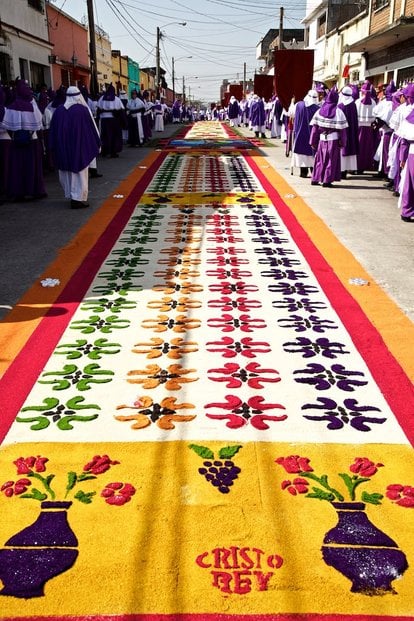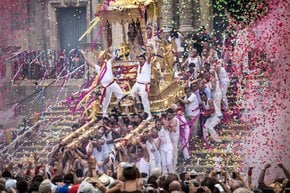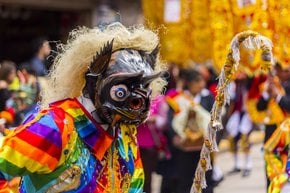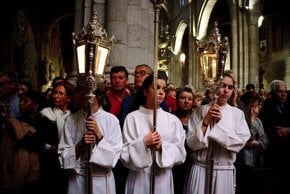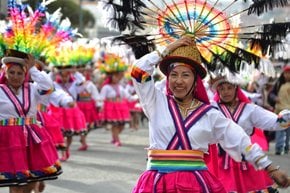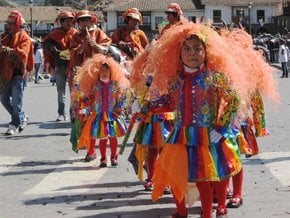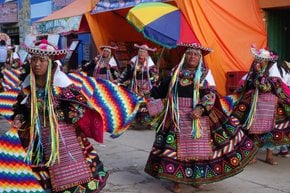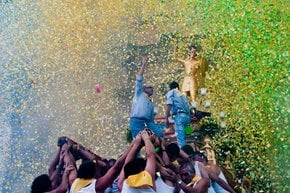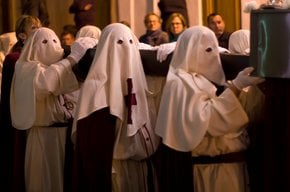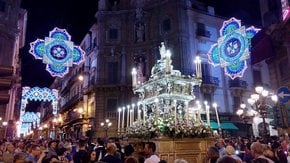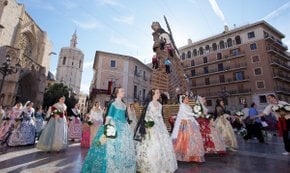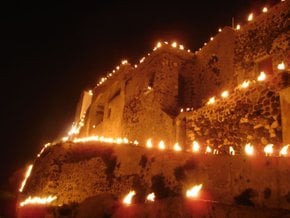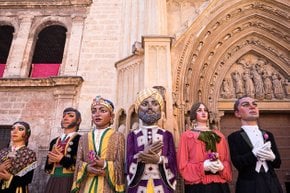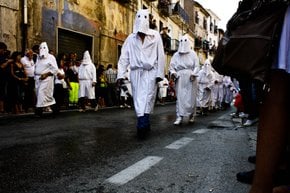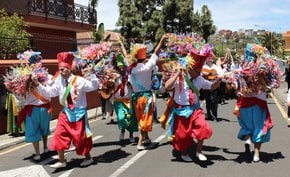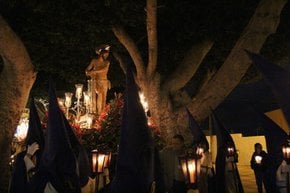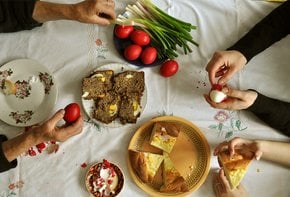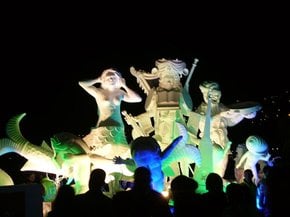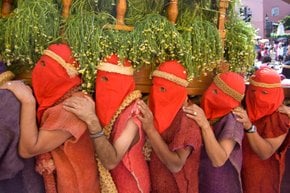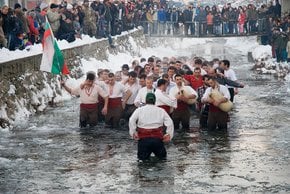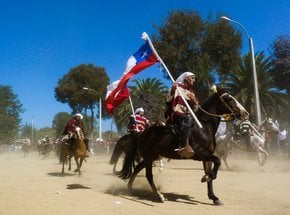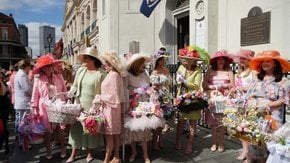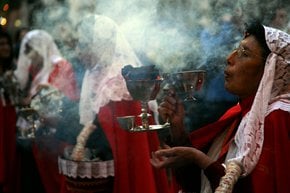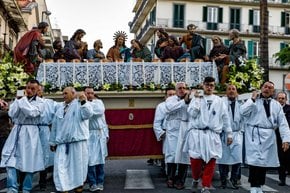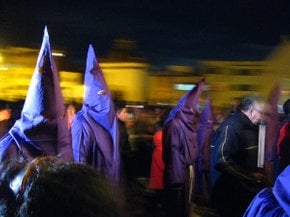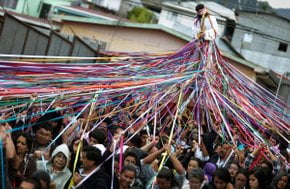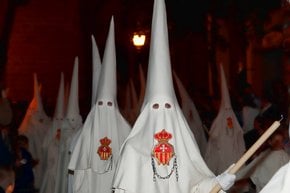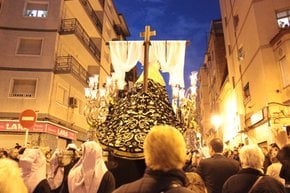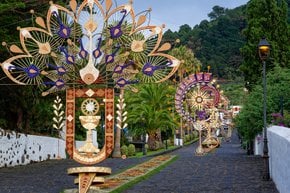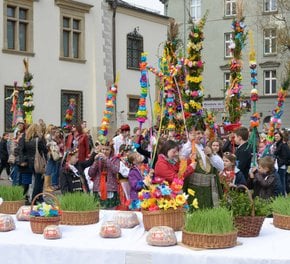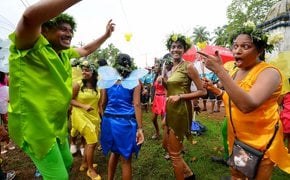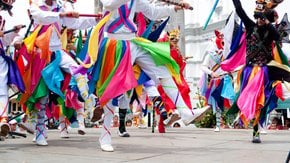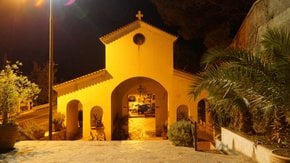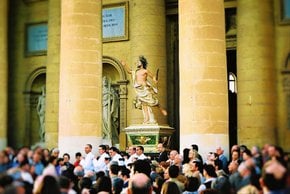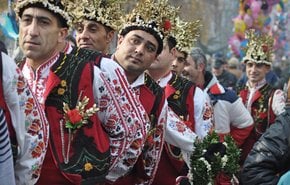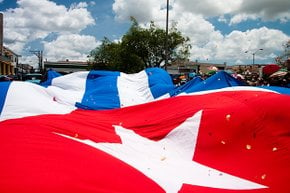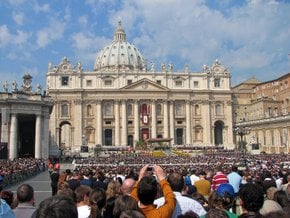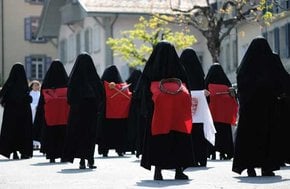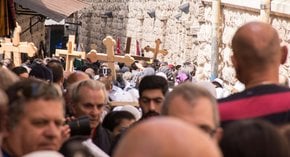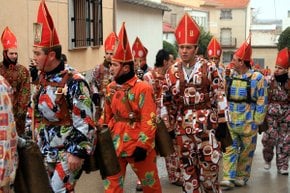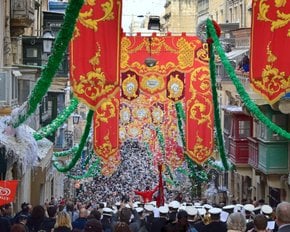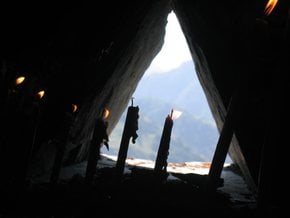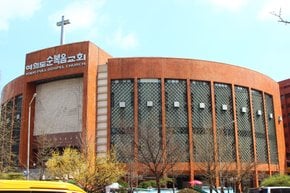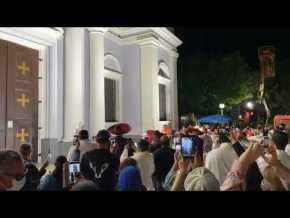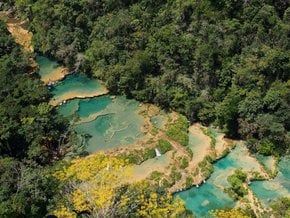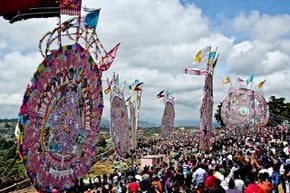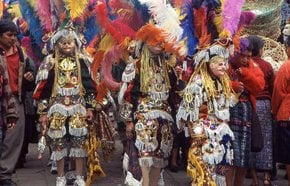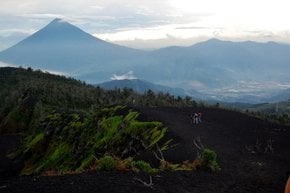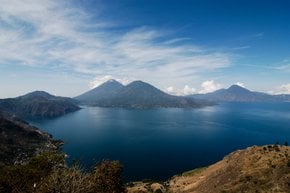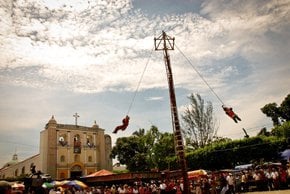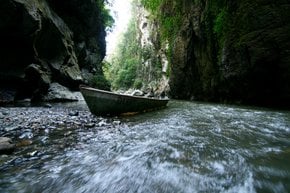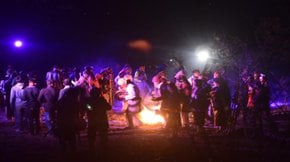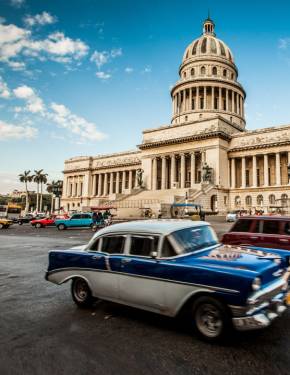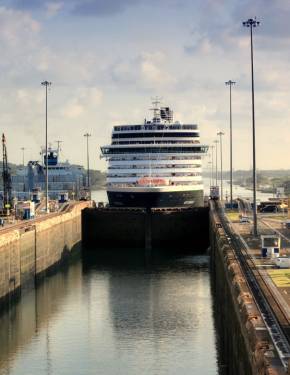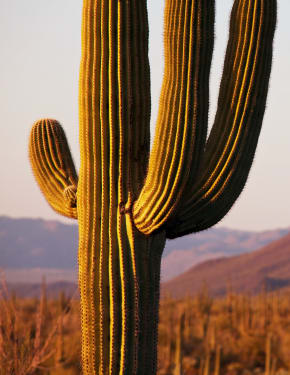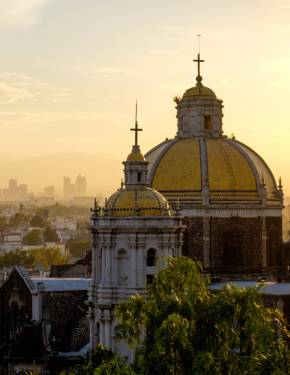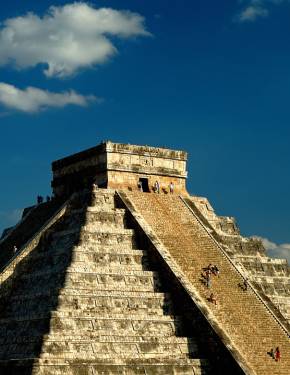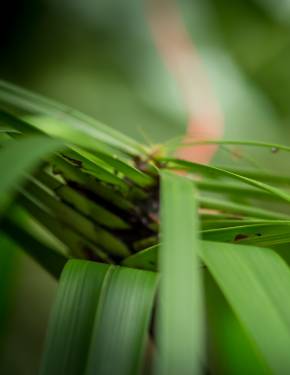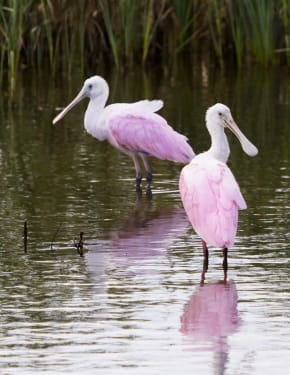Semana Santa (Holy Week) in Antigua 2025, Guatemala
Deemed world's greatest Easter Week Festival, local celebrations amaze with fervent and colorful ceremonies
Dates: April 13–20, 2025
While Easter isn't normally associated with countries like Guatemala, this tropical paradise also celebrates Semana Santa (the Holy Week) with a twist. Locals prepare for the holiday weeks in advance, which means Easter in Guatemala can't help but be memorable. So, let's dive into the details!
Easter Foods in Guatemala
Food is an integral part of Easter and the Holy Week in Guatemala. Families get together to share customary foods with great cultural and religious importance. A great example is Fiambre–a complex and colorful salad, made with a variety of meats, vegetables, cheeses, and pickled components. Prepared ahead of time and served cold, the meal is one of the most popular dishes during this period. Fiambre also has a symbolic meaning, representing the fusion of indigenous, Spanish, and other cultural elements found in Guatemalan cuisine. In addition, during the Holy Week, locals treat themselves to sweet pastries like molletes—sweet bread rolls stuffed with fruit or cream—and torrejas—a type of French toast drenched in syrup. Thus, there's food for every taste bud!
Traditions
The Holy Week (Semana Santa) in Guatemala is highly underestimated. From Palm Sunday on, you can see sorrowful processions, commemorating the death of Jesus and smell the sorrow in musky odors of flowers and incense. Tremendous floats topped by crucified Jesus weighing literal tons are hoisted by hundreds of purple-hooded devotees and carried along the streets ornated with colorful hand-made "alfombras." These unique carpets are made by the citizens months before the celebration itself on a layer of sand above the cobblestone and covered with multicolored sawdust, typical Guatemalan decorations, and also pine needles, flowers, and other plants. Alfombras are created as a token of sacrifice, and even though the process of creation is quite laborious and time-consuming, the carpets are destroyed right after the ceremonies.
Holy Week in Antigua
During Easter season, Antigua's cobblestone walkways turn into a living painting, embellished with sophisticated carpets, made from vibrant sawdust, flowers, and pine needles. All these elements are placed painstakingly, to represent religious motifs and symbolism. Sombre parades with intricately decorated floats bearing sculptures of Christ and the Virgin Mary are held on each day of Holy Week. These marching sessions are accompanied by melancholic chants and steady drumbeats. The week culminates on Good Friday, when large crowds assemble to watch the sombre and moving reenactment of Christ's Passion as the procession makes its way through the charming colonial streets. Altogether, these experiences perfectly capture Antigua's rich religious and cultural legacy.
Floats
The main element of each procession is a large float, dedicated to a scene from the Passions of Christ. Heavy wooden floats are carried through the streets during the whole day despite their heavy weight. The biggest floats require to be carried by 80 people, who change every 15 minutes. Overall, more than 2000 carriers take part in some processions. There are many volunteers, since it is considered an honor to do that job.
Women also engage in the ceremonies and carry floats with the Virgin Mary—most while wearing high heels! A week of sorrowful ceremonies is crowned with fireworks and other merriments held on Easter Sunday. The Guatemalan Easter celebration is considered the largest one found in the world.
However, Christianity was introduced to the country only in the 16th century with the arrival of the Spanish missionaries. Today, local religion represents a fusion of traditional indigenous and Christian beliefs. Catholic Easter falls on one of the Sunday between March 22 and April 25, usually within seven days after the full moon.


